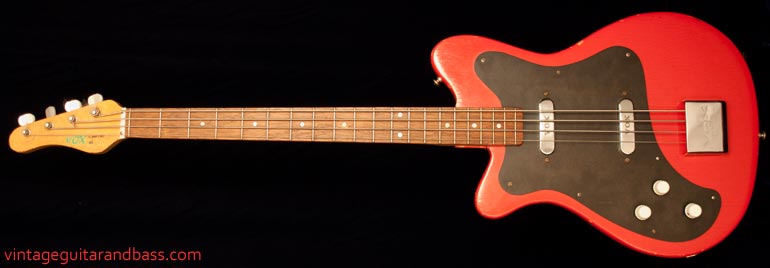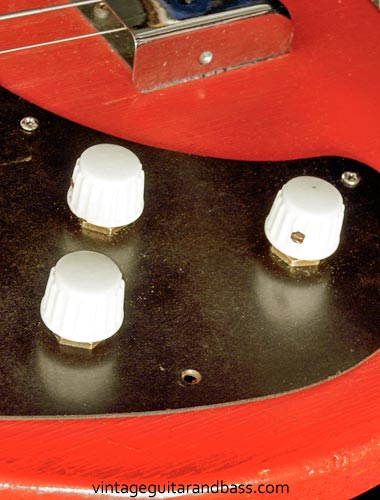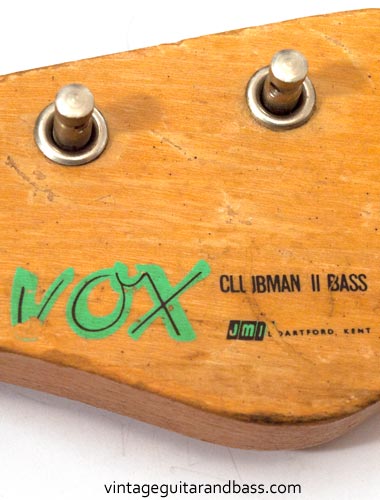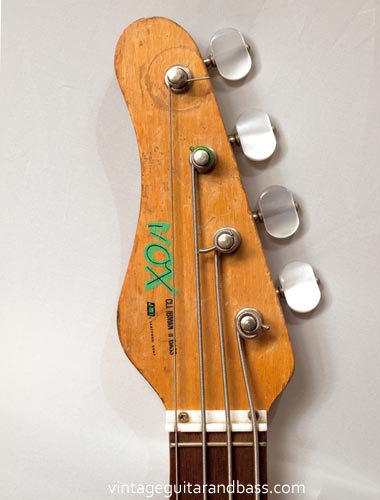Model: 1963 Vox Clubman Bass - left handed
Body: Laminate
Neck: One-piece sycamore with non adjustable truss-rod. Three-piece laminate rosewood/sycamore fingerboard with dot inlays
Scale: 30"
Width at nut: 1 9/16"
Weight: 2.6 kg
JMI offered left hand versions of most of their Vox guitars - at least their 1960s price lists suggest as much, though very few examples come up for sale, suggesting minuscule levels of production. The Vox Clubman bass was one of the brands best selling early guitars, so it is perhaps more likely that left handed examples of this model should come up than some of the far more obscure instruments.
The Clubman bass was, after all, the least expensive bass in the Vox range, aimed at student musicians. It had a short (30") scale, but was relatively well equipped with twin Vox V1 pickups. Lightweight and very playable. At this point, the Clubman bass shared many parts with it's six-string equivalent, the Clubman guitar, including body, pickups, scratchplate, tuning keys; but not bridge or neck.
This example, like most early Vox instruments, has a laminate wood body, and a very thin one at that - just 15/16". Compare this to a later, 1965 example, that has a pretty nice solid mahogany body with a depth of 1 1/16". It isn't a massive difference, and they weigh the same, but that extra 1/8" gives the later example a more substantial feel, and importantly, provides that bit extra room for a front-mounted output jack.
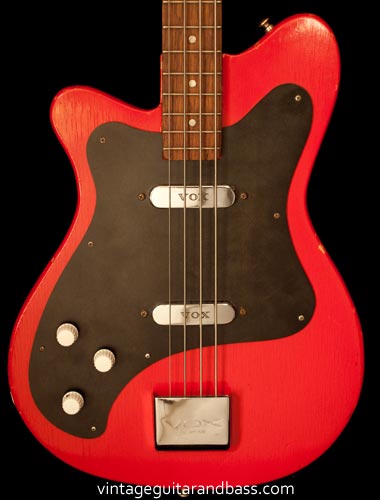
Scratchplate material changed over the years. Black was standard for the Clubman bass from 1961 into 1963. These early black (bakelite?) guards are comparatively thin (1.6mm), and somewhat fragile, though not as susceptible to shrinking as some other guards.
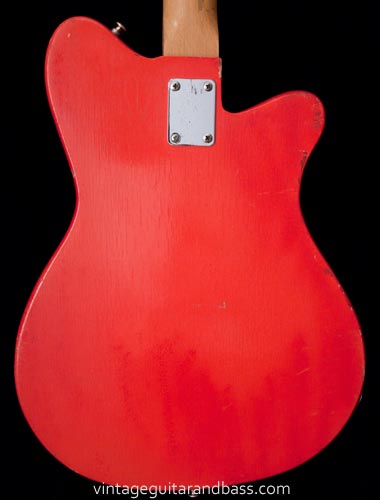
The neck bolts to the body with four 1" screws, through a smaller (41mm x 56mm) neckplate.
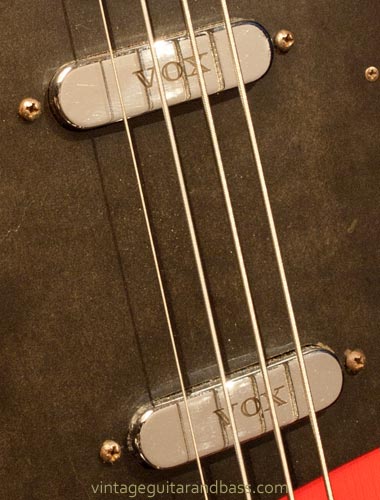
Early black scratchplates do seem to be subject to discoloration. The reverse of this guard is considerably blacker than the 'greyed' front. Pickups are both
Vox V1 single coil units with chrome plated, Vox-emblazoned covers. Later examples of the Clubman bass had just one, or no Vox logos on their covers. Compare this bass with a
1965 example with two plain covers.
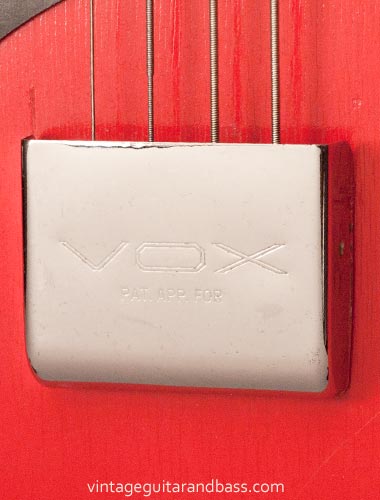
The chrome-plated bridge cover is emblazoned with the Vox logo and PAT. APP. FOR (patent applied for) text. This simple and lightweight cover easily clips onto two recesses in the bridge unit itself.
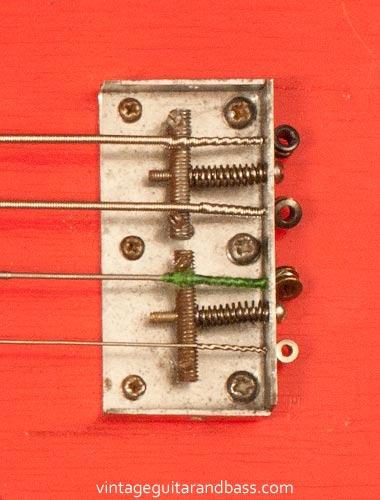
The bridge design itself was fairly cheap, made from a simple pressed metal plate and a few screws. It was, though, pretty effective allowing simple intonation and height adjustment. This is the same bridge design as used on the
Bassmaster and Italian-built
Panther basses.
The front of the headstock with JMI green Vox decal, typical of early UK Vox production. The decals on these early UK Vox guitars were never hard-wearing, but this one has lasted better than most. The text gives model designation and describes the location of manufacture: Dartford, Kent. Interestingly, the model is described as Clubman II bass - suggesting the existence of a (single pickup) Clubman I bass. In fact the equivalent guitar model was widely shipped as a Clubman I and II (see a 1963 Clubman II guitar) but the bass was almost exclusively dual pickup. No doubt small numbers of Clubman I basses were produced, but even as early as 1962 the bass was being described in Vox literature simply as 'Clubman bass' with two pickups listed as standard. See the 1962 Vox catalog which describes Clubman I and II guitars, and although it mentions single and dual pickup basses, only use the name 'Clubman bass'.
The tuning keys fitted to this bass are not original, still open-gear type, but with larger plastic buttons than the original ones.
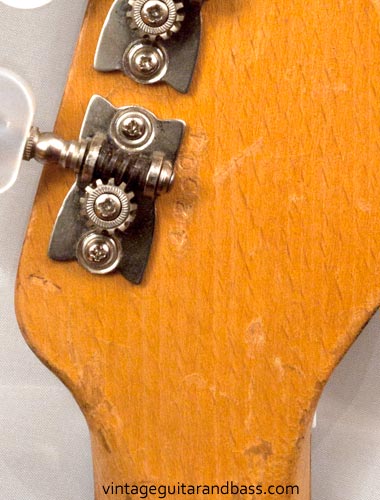
Early British-built Vox guitars had a five digit serial number, most often stamped below the tuning keys on the reverse of the headstock. This number can be quite difficult to read, but is not too hard in this case. There is no date coded into the number, but they were issued consecutively, suggesting a mid-1963 date for this bass.
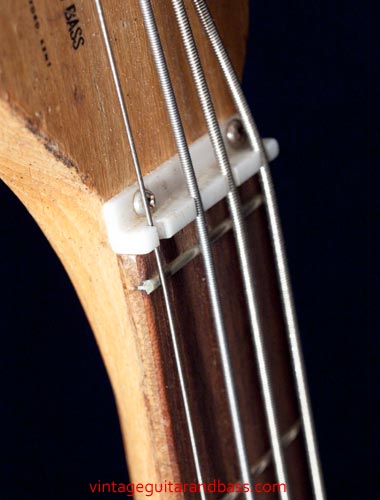
The L-shaped plastic nut shown here was only fitted to certain budget models in 1963, and perhaps into very early 1964. This nut was lightweight and probably not especially durable, but this was not so much of an issue once paired with a zero-fret.
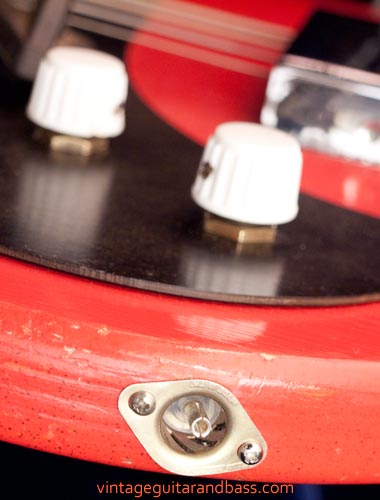
This is a thin instrument - the body measures under an inch in thickness (just 15/16"), and as such is insufficient deep to accommodate a regular guitar jack. Early examples, like this had a side mounted coaxial jack socket. By the mid sixties, many models were upgraded to front-mounted 1/4" jack sockets - this required a thicker body, a thicker scratchplate, and, often, an extra circular spacer around the jack.
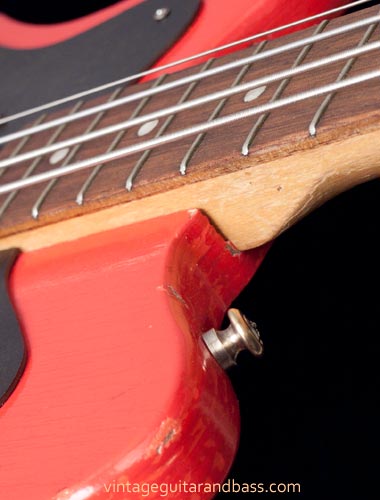
Although this looks like a solid rosewood fretboard, it is actually a laminate of three pieces: a thicker sycamore board is sandwiched between two very thin layers of rosewood. The sycamore edges are dyed a similar brown color to the rosewood.
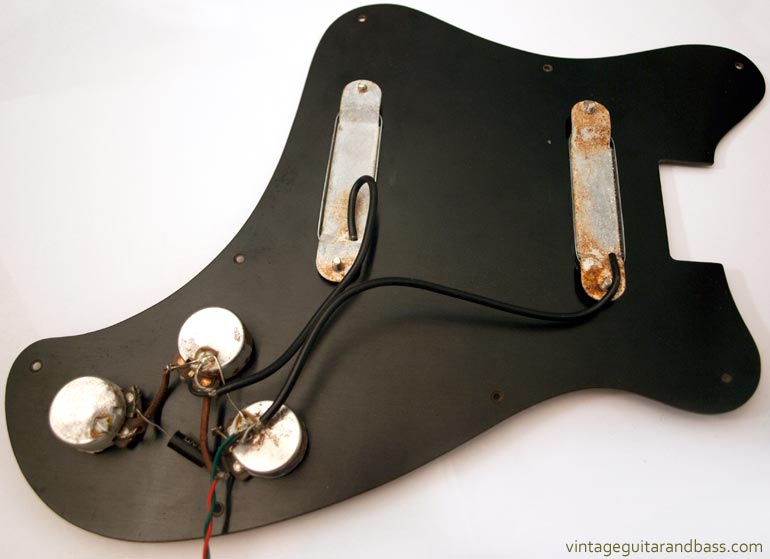
Beneath the scratchplate we see the wiring loom. This is a very simple circuit consisting a volume control for each pickup, and a master tone control. The scratchplate is identically cut to allow left or right handed use (i.e. there is no bevelling on the edge of the guard, but all screw holes are similarly recessed on each side. The 'unused' underside of this scratchplate is considerably less faded than the exposed side.
Got an opinion on the contents of this page? Disagree with something written above? Please
comment

